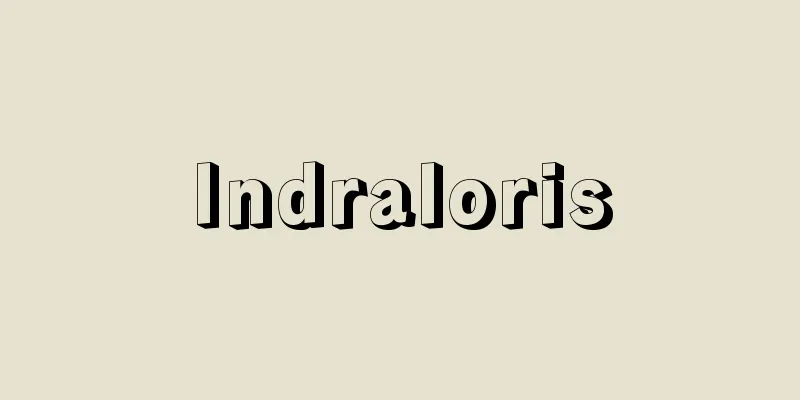Indraloris

|
...which leads to Australopithecus in the late Pliocene and then to Homo erectus in the Pleistocene. There are very few fossils that lead to modern prosimians, but fossils of the losidae species Indraloris are known from Pliocene strata in India. *Some of the terminology that mentions "Indraloris" is listed below. Source | Heibonsha World Encyclopedia 2nd Edition | Information |
|
…そして鮮新世後半のアウストラロピテクスAustralopithecus,さらに洪積世の原人ホモ・エレクトゥスHomo erectusへとつながっていくのである。現生の原猿につながる化石はきわめて少ないが,インドの鮮新世の地層からはロリス科のインドラロリスIndralorisの化石が知られている。 ※「Indraloris」について言及している用語解説の一部を掲載しています。 出典|株式会社平凡社世界大百科事典 第2版について | 情報 |
>>: Indo-Parthian (English spelling)
Recommend
The Passion of Jeanne d'Arc
A French film made in 1928. Released in Japan in ...
Balazsfalva (English spelling) Balazsfalva
…Population 23,000 (1983). Hungarian: Balázsfalva...
Selection of Manners and Customs - Selection of Manners and Customs
A collection of haiku poems from the mid-Edo perio...
Heterotopic parasitism
…The sites of human parasites are wide-ranging, i...
Nagatomo Kayano
1873-1947 A continental ronin from the Meiji to e...
Selig, WN (English spelling) SeligWN
...However, it was only a matter of time before t...
Stage scenery
A general term for the plastic arts works on stag...
Eyalet - Eyalet
…In order to realize flexible governance accordin...
Tachometer
A general term for instruments that measure the n...
Cercocebus atys (English spelling)
…[Hironari Hayaki]. . … *Some of the terminology ...
Lagenophora mikadoi (English spelling)
…[Hiroji Koyama]. . … *Some of the terminology th...
Uyama Nanamagari - Uyama Nanamagari
...The Oi River, which merges with the Sumata Riv...
Wanouchi [town] - Wanouchi
A town in Anpachi County in the southwest of Gifu ...
Cyperus imbricatus (English spelling)
…[Tetsuo Koyama]. … *Some of the terminology that...
Horse Festival - Umazek
...In western Japan, there are ceremonies called ...









